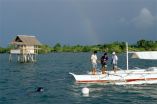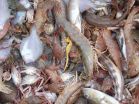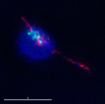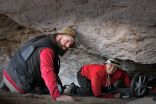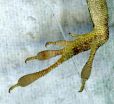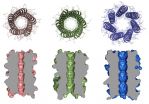In an article published today in Science, Prof. Amanda Vincent of Project Seahorse at the University of British Columbia and Dr. Jean M. Harris of Ezemvelo KZN Wildlife in South Africa call for bold new approaches to the pressing global issue of overfishing and habitat destruction, including networks of marine protected areas, co-ordinated governance, and the co-management of fisheries with local communities.
"Governments and conservationists have tended to focus on the impact of industrial-scale fishing, which is indeed a big problem. At the same time, we must pay attention to small, local fisheries," says Vincent. "They are ubiquitous in the world's coastal waters and, unlike large fisheries, generally operate without oversight or record-keeping. Their impact may be small but cumulatively, it's massive."
Small-scale fisheries involve about 90% of the world's fishers. Most of these 100 million or so fishers depend on the ocean for their livelihoods and many catch fish and other marine animals at unsustainable levels.
Destructive fishing practices such as bottom trawling make matters worse. Trawl nets grab any and all forms of marine life, laying waste to the ocean floor. The total area bottom trawled is nearly 150 times the area of forest that is clearcut annually around the world.
As targeted fish species shrink, both industrial and small-scale fishers move on to other species, depleting them, too, until finally they are catching anything that might provide food or generate cash. Government subsidies, in the absence of regulation, often serve to encourage this overfishing and habitat destruction — and must be abolished.
"We must act now with the most promising tools at hand. No-take marine reserves are one critical approach," says Harris. "Research shows they can be set up quickly to provide vital refuge for species to recover."
Smarter governance is equally important, says Harris: "What we know from the failure of management schemes globally is that regulation at the national level is not enough. Every layer of government, including regions and communities, must help small-scale fishers get control of the fisheries on which they depend."
INFORMATION:
BACKGROUND
Another promising approach: Local fisheries management
Vincent and Harris say that another promising approach to improve the health of the oceans is fisheries co-management, where industry and/or local communities are given a direct stake alongside government in the management of marine animal populations and habitats. This has proven successful in the case of Canada's groundfish fishery and in South Africa's mussel fisheries.
Trawl fishing in the oceans
The total area of seabed trawled each year is nearly 150 times the area of forest that is clearcut annually around the world. Many trawl fisheries, already one of the least efficient and most devastating types of fisheries, no longer target specific fish species and now go out of their way to catch anything and everything they can, from seaworms and shellfish to large fish species. Making the problem even worse are government subsidies for these fisheries — common throughout the world — which have the unintended effect of encouraging overfishing and habitat destruction.
About Project Seahorse
Project Seahorse is a marine conservation group based at the University of British Columbia, Canada, and Zoological Society of London. Project Seahorse works to protect seahorses in order to support ocean conservation more broadly, generating cutting-edge research and using it to inform highly effective conservation interventions. Led by Prof. Amanda Vincent and Dr. Heather Koldewey, both global experts on seahorse conservation, Project Seahorse has won many international awards and honours, and works in collaboration with researchers, governments, conservation groups and local communities worldwide. Our work has been recognized with many international awards and honours, including the Rolex Award for Enterprise and the Whitley Award in Animal Conservation.
About Ezemvelo KZN Wildlife
Ezemvelo KZN Wildlife is the provincial agency mandated to carry out biodiversity conservation and associated activities in the provinceof KwaZulu-Natalin the Republic of South Africa. The primary focus of the organisation is biodiversity conservation - the management of 99 protected areas and two World Heritage Sites which are the uKhahlamba-DrakensbergParkWorld Heritage Site and the Isimangaliso Wetland Park World Heritage Site. The organization also applies provincial nature conservation legislation and its associated regulations.
About Dr. Amanda C. J. Vincent
A Pew Fellow in Marine Conservation and professor at the University of British Columbia Fisheries Centre, Dr. Amanda Vincent is one of the world's leading experts on seahorses and their conservation. She holds a doctorate from the University of Cambridge and has been a Senior Research Fellow at the University of Oxford as well as a faculty member at McGill
University in Montreal, Canada. The first biologist to study seahorses underwater, Dr. Vincent was also the first to uncover the thriving global trade in these charismatic animals. As a result of her efforts, the Convention on Trade in Endangered Species (CITES) adopted international trade controls for seahorses in 2002. She was named a Leader for the 21st Century by TIME magazine, in 1999, and has won many international awards and accolades. She has held many leadership roles in international conservation, and has published extensively in scholarly journals including Nature and Science. She co-founded Project Seahorse in 1996.
About Dr. Jean M. Harris
Jean Harris currently leads the Scientific Services division of Ezemvelo KZN Wildlife, the nature conservation agency for the province of KwaZulu-Natal on the east coast of South Africa. This government agency is responsible for conservation of biodiversity both inside and outside protected areas, including management of 99 protected areas, spanning montane, savannah and
marine ecotones. Her own research has focused on marine conservation planning, subsistence fisheries management and co-management, and rocky shore intertidal biodiversity. She a member of the Scientific Authority of South Africa which advises the national Minister of
Environmental Affairs, a Pew Marine Conservation Fellow and a member of the Marine Science for Management Program Committee of the Western Indian Ocean Marine Science Association, which promotes marine science on the east coast of Africa and the Indian Ocean Islands.
